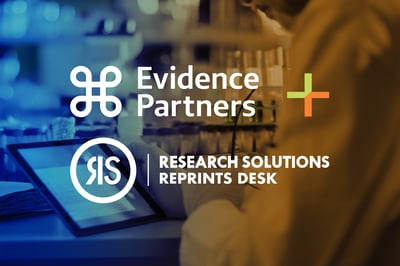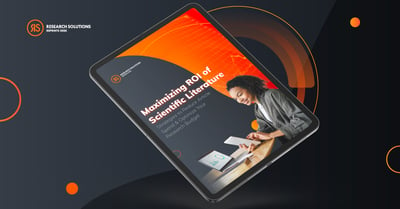Systematic literature review is a critical component of evidence-based research. Done right, it results in an exhaustive summary of the existing literature and data relevant to a clearly defined research question.
It is a rigorous and complex process that involves searching an enormous and ever-growing body of knowledge, screening articles for relevance, storing citations and ultimately, synthesizing the evidence in a manner that is repeatable and without bias.
Needless to say, conducting a systematic review is a massive undertaking.
Typically, literature review searches return between 1,000-5,000+ reference articles. After screening for relevance, only a small percentage of those articles make the final cut. And while screening that many articles takes time, it’s just one step in a systematic review. Identifying, extracting, and synthesizing the evidence comes next. Considering what’s involved, it’s no surprise that systematic reviews often take many months (sometimes even years) to complete.
In an industry where getting your research out before the competition is critical, time is a valuable commodity.
Automating Systematic Reviews
Rather than relying on old-school, manually intensive methods, forward-thinking research organizations are turning to systematic review software to automate much of the manual, labor-intensive work, including reference screening and data collection and collation, reviewer conflict checking, duplicate reference removal, and inclusion/exclusion processing. In so doing, these organizations are saving researchers’ time (and allocating valuable human resources to more strategic work)—while simultaneously improving the quality and accuracy of the research.
In particular, review software can help in three key areas: collaboration, compatibility, and compliance:
- Collaboration: While traditional spreadsheets make it difficult to manage and track remote collaborators’ input and changes, a comprehensive cloud-based solution enables remote research teams to collaborate in real time—to produce better quality work in less time.
- Compatibility: In a process that often involves multiple collaborators, collecting, screening, and storing thousands of references, the risk of human error is high. At the same time, accuracy is essential in systematic reviews because any number of simple mistakes (e.g. duplicate references, transcription errors, and accidental inclusions/exclusions) can skew or even invalidate the results. By automating manual tasks, systematic review software reduces the chance of human error (e.g. file import/export; data management)—while also improving the efficiency and quality of analysis and reporting via built-in artificial intelligence (AI).
- Compliance: In addition to searching and screening, systematic literature reviews must ensure all articles are handled in a copyright compliant manner. Advanced systematic review solutions provide a range of automated functions for documenting protocol and processes to facilitate compliance.
At Research Solutions, we are delighted to announce a new partnership agreement that integrates Article Galaxy’s on-demand document delivery service with DistillerSR, Evidence Partners’ advanced literature review software, to provide researchers with seamless access to the scholarly literature they are reviewing.


